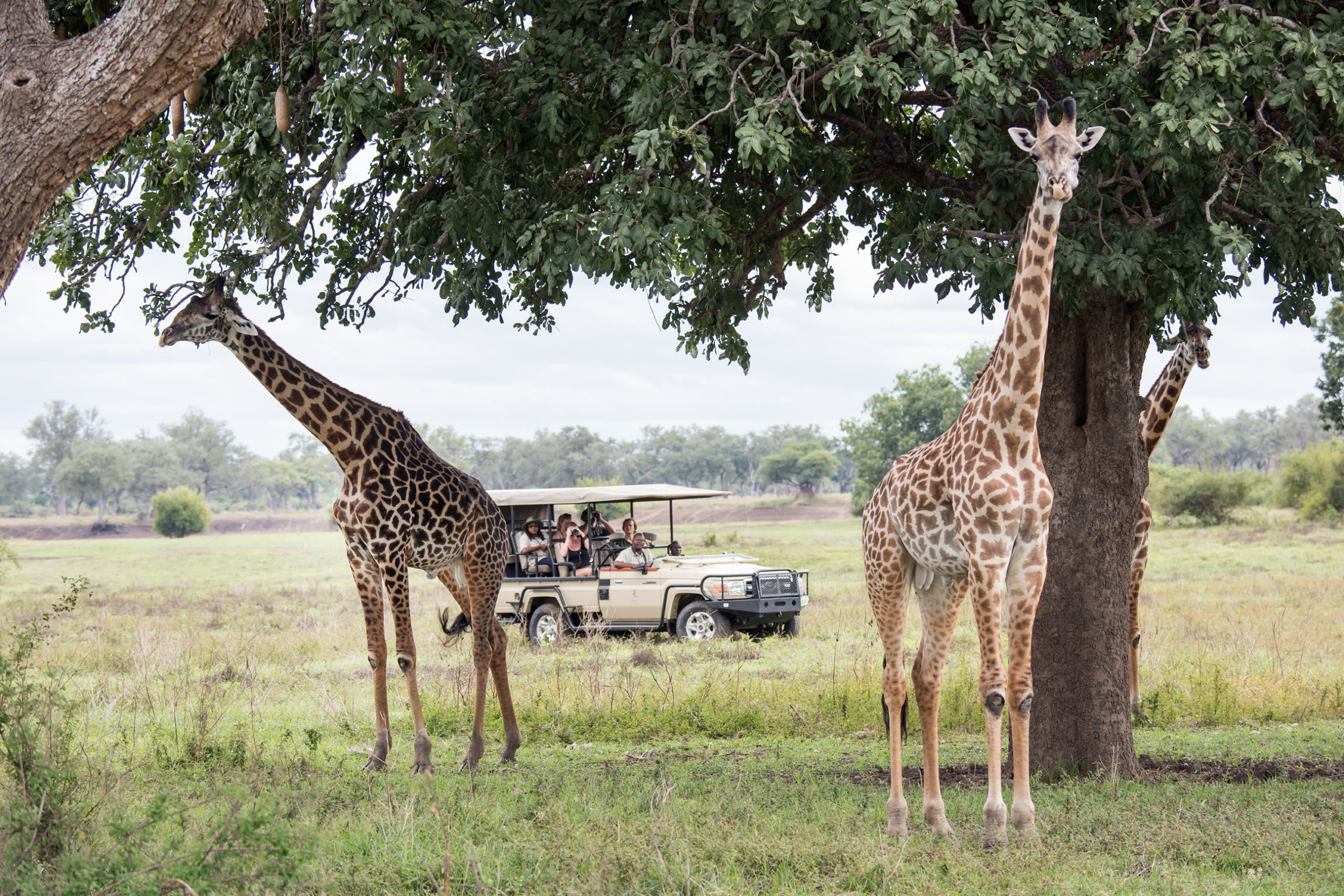A luxury safari doesn’t have to come at the cost of sustainability. Sarah Kingdom headed to Green Safaris’ beautiful Shawa Luangwa Lodge to see for herself…

In these days of consumerism, depletion of natural resources, pollution, global warming and more, travellers have started taking stock of the environmental impact of their holidays. They’ve started becoming more conscious, and conscientious, in their choices; looking to travel in a way that strikes a balance between seeing the world and doing so in a way that won’t damage the planet. Choosing a sustainable safari is a good way to start. Support local communities, protect the natural environment, and conserve wildlife… all whilst leaving behind a minimal footprint. A luxury and amazing safari doesn’t have to come at the cost of sustainability and we had come to the beautiful Shawa Luangwa Lodge to see this for ourselves.
A Silent Safari – An Entirely New Experience
With a strong commitment to reducing their footprint on the environment, and focusing on sustainable initiatives, Green Safaris’ Shawa Luangwa Lodge prioritises eco-friendly practices. The company goal is to leave the areas they operate in as untouched as possible. Most of Green Safaris’ seven lodges are run by solar farms, utilise water reticulation and biogas systems, and have banned single-use plastics, amongst other eco measures. Shawa Luangwa Camp itself is 100% sustainable, running completely off the grid, with a large solar farm powering the entire lodge and also recharging their other innovation, electric Land Cruisers. The lodge operates the only ‘eCruisers’, electric game drive vehicles, in South Luangwa. These are not only more environmentally friendly but also mean you experience your safari in an entirely new way… silently.

The spot where the lodge stands was handpicked, after many years of searching, by renowned Zambian safari guide Jacob Shawa. Jacob discovered his interest in wildlife whilst attending, what was at the time, the only high school in the Luangwa Valley. After leaving school, and embracing his passion for wildlife, Jacob qualified as a safari guide, a role he excelled at, ultimately being recognised as one of the world’s top eight safari guides by Wanderlust magazine in 2017. In recognition of this achievement, Senior Chief Nsefu of the Luangwa Valley offered Jacob the opportunity to choose for himself a piece of land in his chiefdom on the Luangwa River. From these humble beginnings, Shawa Luangwa Camp was born. Jacob partnered with Green Safaris, and the rest is, as they say, history!
Spoilt for Sightings at South Luangwa
Our first day at Shawa Luangwa started with drinking coffee as we watched two lions lying on the opposite river bank. It was a great start to the day! From there we crossed the river and headed into the park to see what we could see… and there was plenty to see! Thornicroft’s Giraffe, Crawshay’s Zebra, impala, waterbuck and a lone Cookson’s Wildebeest dotted the landscape. A huge herd of buffalo, hundreds, possibly thousands strong, surrounded us as they crossed the road. A spotted hyena lay sleeping in the sand. Helmeted guinea fowls trooped across the grassland, weaver birds’ nests hung like Christmas decorations in the acacia trees, a long-tailed paradise whydah flew alongside the vehicle. To top it all off, just as we were returning to camp, a young female leopard appeared alongside us, pausing to look at us for a while, before vanishing into the undergrowth.
After a delicious brunch back at camp, we headed off for our ‘post-brunch siesta’. We the sides of our tent open so we could enjoy the view, and were rewarded by a visit from a huge troop of baboons. The trees above us were full of baboons, eating, jumping, and chatting. On the ground below sat more baboons snacking. Fallen sausage tree fruits, grasses, blossoms, seed pods, the occasional insect, all found their way into the baboons’ mouths and I was amazed at the variety and quantity they consumed. Beyond the baboons, we could see the river. Hippos wallowed and a pied kingfisher dived repeatedly for fish in the shallow water. A pair of young male kudus stood amongst the trees on the opposite bank. It was hard to sleep with so much to look at!


We spent the afternoon with more buffalo, impala, giraffe, zebra, wildebeest and a herd of elephants who ranged in size from the large matriarch right down to the smallest of babies. Later in the day, we would see more than our fair share of leopards. A young female using a gully to (unsuccessfully) stalk a puku, a young male lying in the shade by the side of the road, and finally a large male, who under cover of darkness sauntered down the road, liberally marking his territory as he went, keeping just ahead of us as we made our way back to camp at the close of day.

We left Shawa Luangwa in the early morning, crossing the pontoon at sunrise. The morning air was chilly and still, the river flowed like silk and a brilliant sunrise lit the sky with streaks of red, pink, purple and orange. It was so beautiful you wanted to hold your breath in amazement, and hope the moment would last forever. We stood, watching and listening as the sky grew lighter, and the birds and other creatures woke up around us. It was a magical way to be reminded of just how small and insignificant we were, and was the perfect way to say goodbye to the park.
When you love the beauty of the bush, and its many opportunities for wonderful encounters and experiences, you want to protect these magical places. Fortunately, there are people and places like Green Safaris and Shawa Luangwa working to create a sustainable future for tourism in South Luangwa.
Writer: Sarah Kingdom
Photography: Green Safaris, Jacob Shawa

Leave A Comment